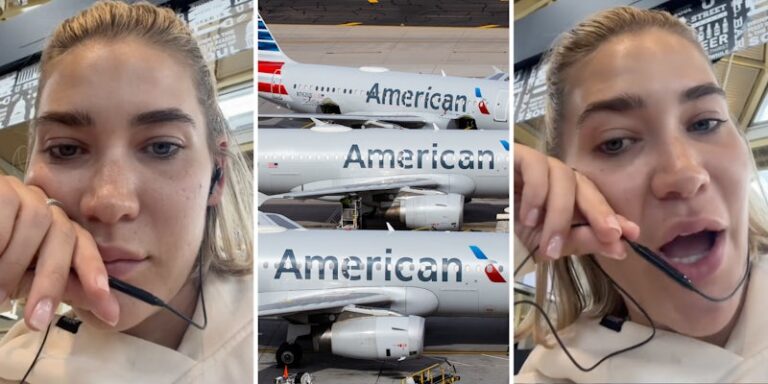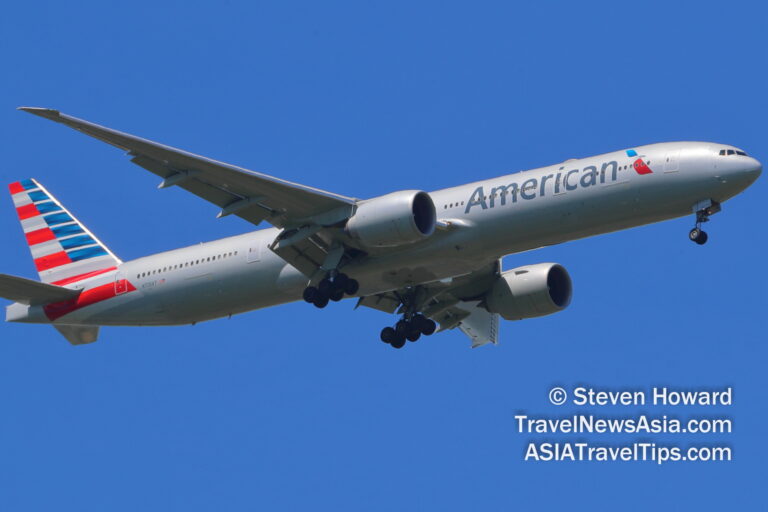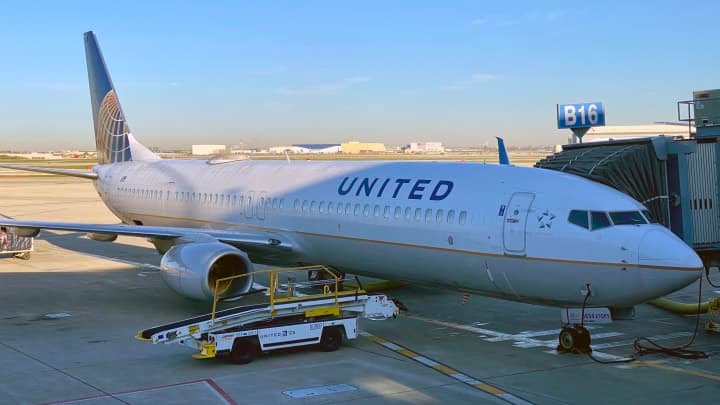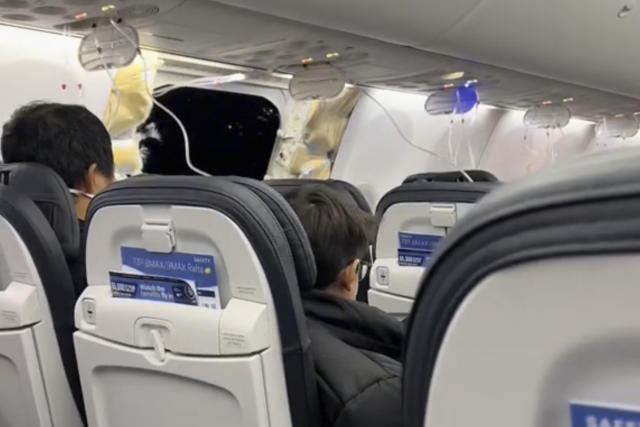“Chaos in the Skies: American Airlines Passengers Left Stranded for Hours as Pilot No-Shows Amid Mounting Travel Woes!”
Imagine being all set for your long-awaited vacation or crucial business trip, only to find yourself stuck on the tarmac for hours. That’s exactly what happened to dozens of frustrated American Airlines passengers when their pilot simply didn’t show up!
The incident sparked outrage as travelers took to social media, sharing their horror stories of missed connections, ruined plans, and endless waiting. With tempers flaring and no clear answers from the airline, the situation quickly escalated, turning what should have been a routine flight into a full-blown travel nightmare.
Passengers reported that after boarding, they were kept in the dark for hours about the reason for the delay. It wasn’t until much later that they learned their pilot was a no-show, leaving them stranded without a replacement in sight. As the delay dragged on, tensions boiled over, with some passengers demanding to be let off the plane while others desperately scrambled to find alternative flights.
This debacle comes as American Airlines has faced mounting criticism for frequent delays, cancellations, and customer service failures. With travelers already on edge from this summer’s travel chaos, this latest incident adds fuel to the fire of growing discontent.
The drama didn’t end there—rumors swirled that the pilot’s absence was due to a last-minute scheduling conflict, leaving passengers questioning the airline’s ability to manage its operations. As the story continues to unfold, many are left wondering: can American Airlines get its act together before its reputation hits rock bottom
Chaos in the Skies: American Airlines Passengers Left Stranded for Hours as Pilot No-Shows Amid Mounting Travel Woes
In the world of air travel, delays and cancellations have unfortunately become an all-too-common occurrence, especially during peak travel seasons. But for a group of American Airlines passengers, what began as a routine flight quickly devolved into a nightmare that would leave them stranded on the tarmac for hours, sparking outrage and further tarnishing the reputation of the already beleaguered airline.
It all started like any other day for travelers at one of the busiest airports in the United States. Dozens of passengers, some heading off on long-awaited vacations and others en route to critical business meetings, boarded their American Airlines flight with the expectation of taking off on time. Little did they know, they were about to be thrust into a chaotic situation that would test their patience and push them to the brink of frustration.
After boarding the plane, the passengers were eager to settle into their seats, anticipating takeoff within the next few minutes. The standard pre-flight routine unfolded: overhead bins were closed, seat belts were fastened, and the safety demonstration was given. But then, something unexpected happened—nothing. As the minutes ticked by, the plane remained stationary, and no further announcements were made. What was initially a minor inconvenience soon became a cause for concern as the delay dragged on without explanation.
At first, the passengers remained patient, assuming that the delay was due to some routine issue—perhaps a minor technical glitch or a bit of bad weather. However, as the delay extended into hours, the mood on the plane began to shift from quiet anticipation to simmering frustration. Passengers began exchanging worried glances and murmuring among themselves, speculating about the cause of the delay. Yet, there was no communication from the flight crew, and the passengers were left in the dark about what was happening.
As time passed, some passengers grew increasingly anxious. Parents with young children struggled to keep them calm in the cramped quarters, while others fretted over missed connections and the impact the delay would have on their plans. The lack of information only served to heighten their anxiety. Some passengers attempted to ask the flight attendants for updates, but the crew seemed just as uninformed, offering vague assurances that they were “waiting for clearance to take off.”
It wasn’t until much later that the truth finally came out: the pilot had simply not shown up.
The revelation sent shockwaves through the cabin. Passengers could hardly believe what they were hearing—how could a major airline like American Airlines allow a situation like this to occur? The absence of a pilot was not just a minor inconvenience; it was a serious oversight that reflected poorly on the airline’s operational management. In an industry where safety and reliability are paramount, the fact that a pilot could be a no-show without any immediate replacement was alarming to say the least.
The situation quickly escalated as passengers began to voice their outrage. Some took to social media to document their ordeal, sharing photos and videos from inside the plane. The story quickly went viral, with people around the world expressing disbelief and sympathy for the stranded travelers. The hashtag #AmericanAirlinesFail began trending on Twitter, with users sharing their own horror stories and calling for the airline to be held accountable.
Back on the plane, tensions were reaching a boiling point. Passengers demanded answers from the flight crew, who were now caught in the crossfire between the disgruntled travelers and the airline’s management. Some passengers insisted on being let off the plane, while others frantically tried to rebook their flights or find alternative travel arrangements. The atmosphere on the plane was tense, with some passengers becoming increasingly irate as the hours wore on.
Rumors began to circulate among the passengers that the pilot’s absence was due to a last-minute scheduling conflict. Some speculated that the pilot had been overworked and had reached the maximum number of hours allowed under FAA regulations, making it illegal for them to fly. Others wondered if the pilot had called in sick at the last minute, and the airline had failed to arrange a replacement in time. Whatever the reason, it was clear that American Airlines had dropped the ball, and passengers were paying the price.
As the delay continued, the situation on the plane became increasingly untenable. Passengers were now trapped in a confined space with no end in sight, and the lack of communication from the airline only added to their frustration. Some began to openly criticize the airline, accusing it of being incompetent and unprofessional. Others expressed concern about the impact the delay would have on their plans, with some facing the prospect of missing important events or losing out on non-refundable bookings.
Eventually, after hours of waiting, the passengers were finally allowed to disembark. But by then, the damage had already been done. Many were left scrambling to find alternative flights or accommodations, while others were simply too exhausted and frustrated to continue their journey. For some, the ordeal had turned what should have been a pleasant trip into a nightmare they would not soon forget.
In the days that followed, American Airlines faced a barrage of criticism from both passengers and industry experts. The incident was seen as symptomatic of a broader problem within the airline, which has been plagued by a series of operational failures in recent years. Critics pointed to the incident as evidence that the airline’s management was failing to adequately address the issues that have been causing frequent delays, cancellations, and other disruptions for passengers.
For American Airlines, the incident was a public relations disaster. The airline quickly issued an apology to the affected passengers, promising to investigate the matter and ensure that such an incident would not happen again. However, for many passengers, the apology rang hollow. The incident had exposed serious flaws in the airline’s operations, and passengers were left questioning whether they could trust American Airlines to get them to their destination safely and on time.
The incident also raised broader questions about the state of the airline industry as a whole. With airlines increasingly cutting costs and pushing their staff to the limit, passengers are left wondering whether their safety and comfort are being sacrificed in the name of profitability. As the story of the stranded American Airlines passengers continued to make headlines, it became clear that this was not just an isolated incident, but part of a larger trend that was eroding public trust in the airline industry.
As the fallout from the incident continues to unfold, one thing is certain: American Airlines has a long way to go in restoring its reputation and regaining the trust of its passengers. The question now is whether the airline will take meaningful action to address the issues that led to this debacle, or whether it will continue to stumble along, leaving its passengers to bear the brunt of its failures. For the passengers who were left stranded on that fateful flight, the answer cannot come soon enough.






